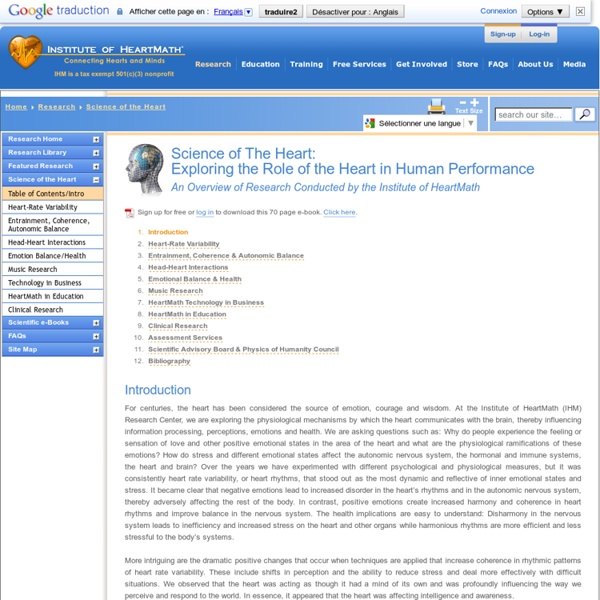



About Biomimicry 3.8 is the global leader in biomimicry innovation consulting, professional training, and educational program and curricula development. Our mission is to train, equip, and connect engineers, educators, architects, designers, business leaders, and other innovators to sustainably emulate nature’s 3.8 billion years of brilliant designs and strategies. Over the past 14 years, our company has helped more than 250 clients and partners redesign carpets, furniture, manufacturing processes, airplanes, and even entire cities, all in nature’s sustainable image. In concert with our partners we have reached millions through talks and the media and have trained hundreds who now practice biomimicry in their professions. A Brief History When Janine Benyus popularized the term “biomimicry” in her seminal book Biomimicry: Innovation Inspired by Nature (1997), she admits she had no idea it would galvanize an entire movement. Then, we all evolved.
Phage - The Virus that Cures - Science on DocuWatch From Wikipedia A bacteriophage (from 'bacteria' and Greek - to eat") is any one of a number of viruses that infect bacteria. Bacteriophages are among the most common organisms on Earth. The term is commonly used in its shortened form, phage. Typically, bacteriophages consist of an outer protein capsid enclosing genetic material. The genetic material can be ssRNA, dsRNA, ssDNA, or dsDNA ('ss-' or 'ds-' prefix denotes single-strand or double-strand) between 5,000 and 500,000 nucleotides long with either circular or linear arrangement. Phages are estimated to be the most widely distributed and diverse entities in the biosphere. They have been used for over 60 years as an alternative to antibiotics in the former Soviet Union and Eastern Europe.
Mucus found to harbor a previously unknown human immune system Though not something people like to ponder, the purpose of mucus as a protective barrier that keeps underlying tissues moist and traps bacteria and other foreign organisms is well known. However, researchers at San Diego State University (SDSU) have now discovered that the surface of mucus is also the site of an independent human immune system that actively protects us from infectious agents in the environment. Mucus is produced by tissue that lines the inner surfaces of the body which come into contact with the outer environment. The mouth, nose, sinuses, throat, lungs, and gastrointestinal tract all possess mucus-producing tissue. The mucus layer has long been identified as providing protection against the outside world, but in a rather passive manner. No longer. Bacteriophage adheres to mucus layers and provides immunity against invading bacteria (Image: Jeremy Barr) To double check this hypothesis, cells not coated by mucus were also exposed to E. coli.
The second brain in our stomachs 10 July 2012Last updated at 20:53 ET By Michael Mosley BBC TV Michael Mosley swallows a tiny camera which streams live images of his digestive system Our own stomachs may be something of a dark mystery to most of us, but new research is revealing the surprising ways in which our guts exert control over our mood and appetite. Not many of us get the chance to watch our own stomach's digestion in action. But along with an audience at London's Science Museum, I recently watched live pictures from my own stomach as the porridge I had eaten for breakfast was churned, broken up, exposed to acid and then pushed out into my small intestine as a creamy mush called chyme. I had swallowed a miniature camera in the form of a pill that would spend the day travelling through my digestive system, projecting images onto a giant screen. Its first stop was my stomach, whose complex work is under the control of what's sometimes called "the little brain", a network of neurons that line your stomach and your gut.
Biophotons: The Human Body Emits, Communicates with, and is Made from Light Increasingly science agrees with the poetry of direct human experience: we are more than the atoms and molecules that make up our bodies, but beings of light as well. Biophotons are emitted by the human body, can be released through mental intention, and may modulate fundamental processes within cell-to-cell communication and DNA. Nothing is more amazing than the highly improbable fact that we exist. We often ignore this fact, oblivious to the reality that instead of something there could be nothing at all, i.e. why is there a universe (poignantly aware of itself through us) and not some void completely unconscious of itself? Consider that from light, air, water, basic minerals within the crust of the earth, and the at least 3 billion year old information contained within the nucleus of one diploid zygote cell, the human body is formed, and within that body a soul capable of at least trying to comprehend its bodily and spiritual origins. The Body's Circadian Biophoton Output